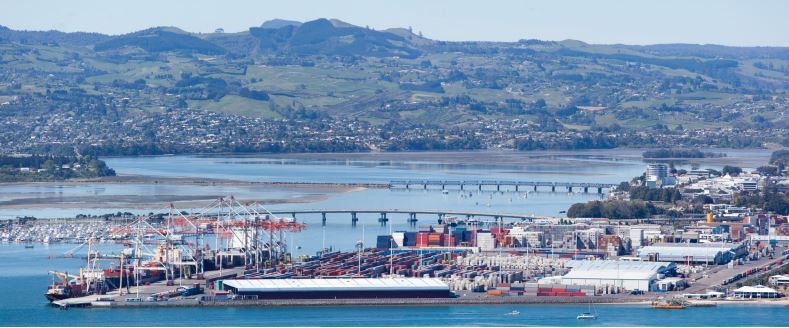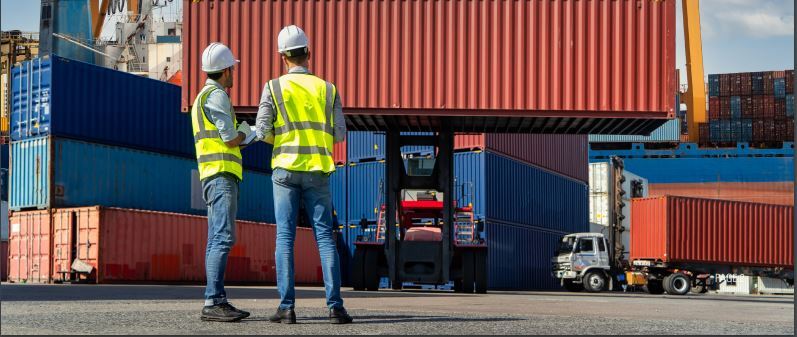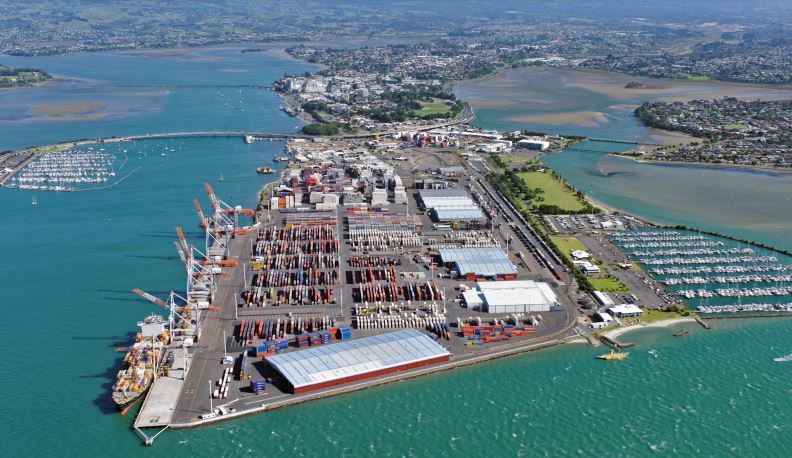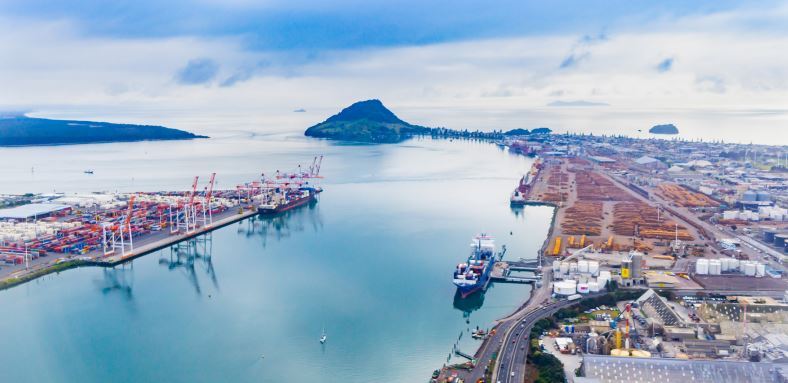Blogs
Improving Safety & Productivity
ABOUT PORT OF TAURANGA
The Port of Tauranga is New Zealand’s largest Port and international freight gateway, generating over $375 million in revenue. The company has significant assets and investments in two other New Zealand ports, two inland container terminals, and logistics marshalling and stevedoring companies.
The Port of Tauranga is the most vertically and horizontally integrated port authority in New Zealand. As of 30 June 2022, the Port has handled 25.6 million tonnes of cargo, including 1.24 million container TEUs.
Since the Port of Tauranga’s container terminal opened in 1998, it has grown from an initial three ship-to-shore cranes and 12 straddle carriers to 9 cranes and 53 straddle carriers to handle the enormous cargo volume arriving and departing daily by road, rail and sea
On the rail, 92 trains weekly are scheduled to move containers to and from Auckland - New Zealand’s largest and most populated city.
Port of Tauranga’s facilities includes the container terminal, bulk cargo wharves, a bunker berth and extensive cargo storage and handling facilities. It has road and rail connections to Auckland, Hamilton and the central North Island, with extensive road networks and coastal shipping links.
Operated by 279 employees, the Port of Tauranga is the only New Zealand port able to accommodate larger container vessels of up to 9000+ TEU. It is no wonder that the Port of Tauranga handles a third of all New Zealand cargo, 36% of New Zealand exports and 42% of all shipping containers

THE CHALLENGE: POOR COVERAGE AND CONNECTIONS
Resilient operations from every part of the workforce were critical to support increased trade amid ongoing supply chain disruptions. However, the team used a mixed fleet of analogue and digital radios that presented communication and safety challenges.
Jason Garrett, Chief Information Officer, Port of Tauranga, explained, “Existing traditional radio management methods using analogue simplex channels brought many challenges such as poor radio coverage, scratchy call quality and weak audio volume. Ground staff struggled to communicate with other staff across the site or when surrounded by 16,000 steel shipping containers stacked 10 - 25 meters high between each party. Imagine the frustration and the danger of poor communication!”
Another critical issue was the challenge of delivering emergency announcements effectively. The existing radio system did not support site-wide safety announcements when required. Sometimes there was a need to stop heavy machinery completely. At other times, it could be a case of alerting ground staff of someone wandering in the yard or evacuating everyone at the site.
Under the traditional radio management method, it was also very inefficient, time-consuming, labourintensive and expensive to manually update 300 radios one at a time when configuration changes were needed.
It was also essential to record every channel to assist in accident investigations, but this was difficult and expensive to accomplish with the existing radio solution.
With the COVID-19 pandemic, the use of the radio system was limited to those physically working on-site. Dispatchers needed to work from home to isolate, but they depended on their mobile radios to coordinate with many external carrier drivers and vessels on site.
Another area for improvement was the inability to quickly identify which radio left the microphone on, causing confusion and frustration when this occasional problem interfered with critical communications.

THE SOLUTION: UNIFIED TEAM COMMUNICATIONS

Motorola Solutions helped the Port of Tauranga build a robust workflow based on Motorola Solution’s Safety Reimagined vision. After carefully understanding the team’s needs, the team proposed the scalable, single-site Motorola MOTOTRBO Capacity Plus trunking solution with six Motorola SLR5000 repeaters and 12 simultaneous time slots.
The Solutions team worked closely with the Port of Tauranga team to roll out the solution in 3 months. The team and the Port of Tauranga trained about 30 staff to use the system within two weeks. The group experienced a significant improvement in site-wide radio coverage, allowing users to have renewed confidence in radio coverage wherever they worked.
The MOTOTRBO Capacity Plus digital radio system increased their number of talk groups significantly, enabling them to share critical voice and data communication on the same system without purchasing additional radio frequency licenses and hardware, allowing the Port of Tauranga to expand their use of radio quickly and easily at no extra cost.
Capacity Plus is designed to expand the MOTOTRBO communication system even further. Capacity Plus allows better monitoring and management of repeaters. If one repeater loses power, radio calls will continue to work using the remaining repeaters, ensuring business-as-usual continuity.
Managing the vast device fleet is much easier with the upgraded radio management server 2.0. “We can manage the radio assets efficiently by seeing their versions, consolidating their radio licenses, and reconfiguring them in one package. Our radio partner can also remotely log in, check on the health of our system and roll out new configurations without being on-site,” remarked Mr Garrett.
The new solution also included TRBOnet Plus – an IP-based radio console that allows staff to manage their radio channels more efficiently. Now, site-wide emergency announcements are instant, clear and effective.
Staff were also extremely pleased with the Received Volume Levelling feature, which delivered consistent audio volume during transmission. Even if team members spoke at different volume levels, voice levels were constant throughout the call, eliminating the need to adjust volume levels whether a team member was yelling or whispering.
MOTOTRBO Capacity Plus’ unique radio digital IDs also solved the problem of identifying which radio is online and who is talking. The offending radio can be quickly identified and resolved along with the Radio Alias feature.
Recording every channel is easily activated through the TRBOnet Call Recorder, enabling easy retrieval of past calls using the IP console. This feature allows team members to deliver more accurate incident management reports promptly by including the actual radio conversation that occurred.
Working from home is now a seamless connection with Motorola’s ecosystem of unified technologies so that work carries on, just like in the office.
THE BENEFITS
• Increased Coverage: Trunking up to 12 digital voice talk paths and 24 dedicated data paths with as many as 1,200 radio users without additional purchases of radio licenses.
• Integrated Voice and Data: Applications such as GPS-enabled location services, text messaging, telemetry and much more, all on the same system.
• Clear and Stable Audio: Enables users to communicate wherever the location at whatever volume, even in noisy backgrounds.
• System-wide Calling: Capability to communicate with all staff at once. Perfect for broadcasting safety and business-critical announcements.
• High Capacity: Delivers five times the capacity of a conventional analog system and up to 3 times the capacity of an analog trunking system.
• Easy Migration: Ensuring smooth integration with existing MOTOTRBO systems via a simple software upgrade. • Efficient Radio Management: Devices can quickly deploy new channels, updates and configurations as required.


















